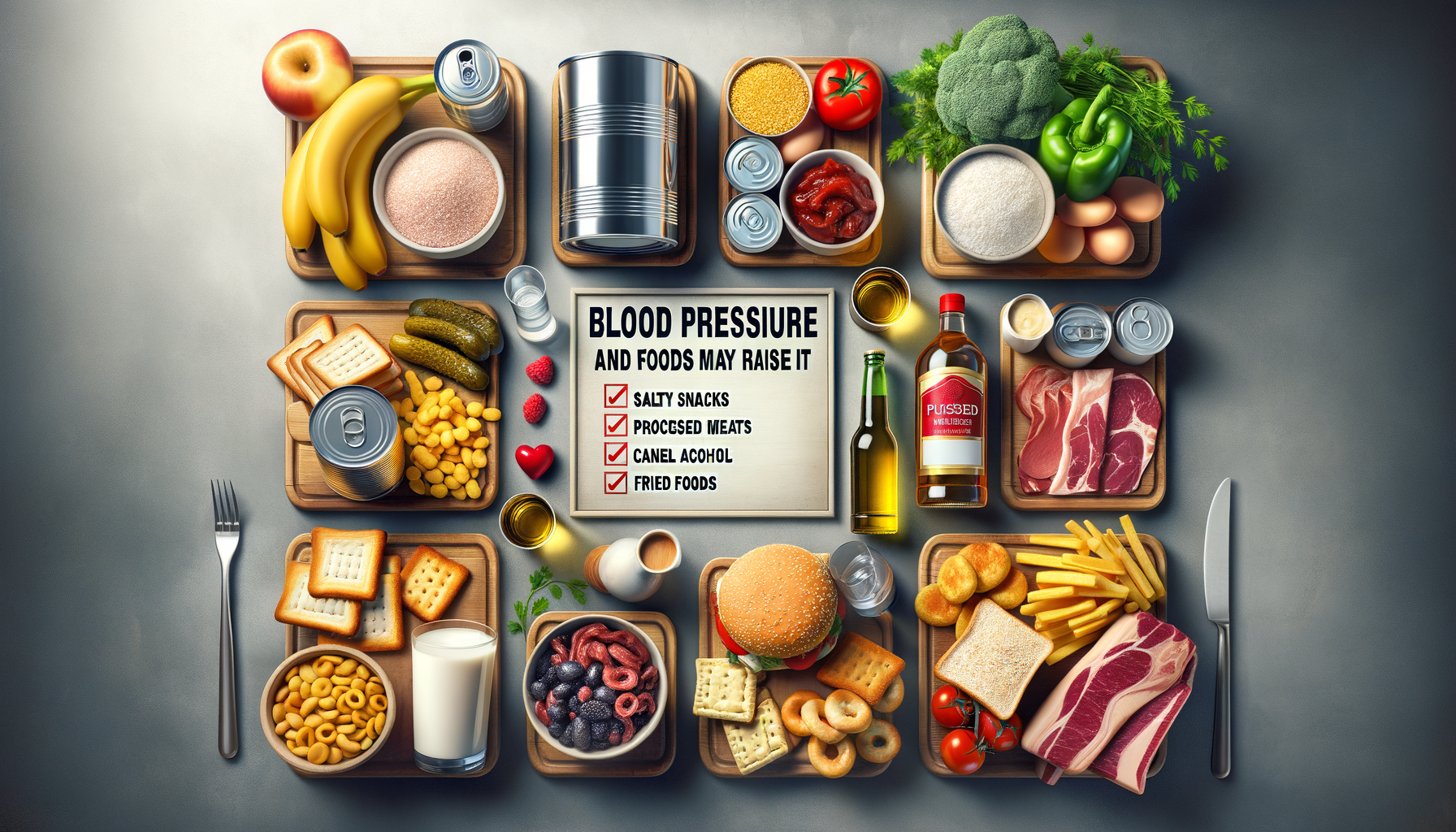7 common foods that may raise your blood pressure
7 common foods that could raise your blood pressure👇

Understanding Blood Pressure
Blood pressure is a vital sign that reflects the force of blood against the walls of the arteries. It is crucial for maintaining adequate blood flow to the body’s organs and tissues. Blood pressure is typically measured in millimeters of mercury (mmHg) and is expressed with two numbers: systolic pressure (the pressure during heartbeats) over diastolic pressure (the pressure between beats). A normal reading is usually around 120/80 mmHg. Monitoring blood pressure is essential because fluctuations can indicate underlying health issues.
High blood pressure, or hypertension, is a common condition that can lead to severe health complications such as heart disease, stroke, and kidney problems. It often develops over many years and can go unnoticed, which is why it is often referred to as the „silent killer.“ Regular monitoring and lifestyle adjustments can help manage and prevent high blood pressure.
The Impact of Diet on Blood Pressure
Diet plays a significant role in managing blood pressure. Consuming a balanced diet rich in fruits, vegetables, whole grains, and lean proteins can help maintain healthy blood pressure levels. However, certain foods can contribute to increased blood pressure, particularly those high in sodium, unhealthy fats, and sugar.
Excessive sodium intake is one of the leading dietary causes of high blood pressure. Sodium causes the body to retain water, increasing the volume of blood and, consequently, the pressure on artery walls. Processed and packaged foods, which often contain high levels of sodium, can be detrimental to blood pressure control.
Common Foods That May Increase Blood Pressure
Several common foods can contribute to elevated blood pressure levels. Understanding these can help in making informed dietary choices:
- Processed Meats: These are often high in sodium and preservatives.
- Canned Soups: Convenient but typically laden with salt.
- Pickles: The brining process involves a significant amount of salt.
- Cheese: Many types of cheese contain high sodium content.
- Bread and Rolls: Surprisingly, these can contain more salt than expected.
- Pizza: A combination of salty toppings and cheese.
- Fast Food: Often high in both sodium and unhealthy fats.
Reducing the intake of these foods can help in managing blood pressure effectively.
Healthy Alternatives and Lifestyle Changes
Making simple dietary swaps can significantly impact blood pressure management. Opt for fresh or frozen vegetables instead of canned ones, and choose low-sodium versions of your favorite foods. Incorporate more potassium-rich foods like bananas, spinach, and sweet potatoes, which can help counteract the effects of sodium.
In addition to dietary changes, lifestyle modifications such as regular exercise, maintaining a healthy weight, and managing stress can further aid in controlling blood pressure. Engaging in activities like walking, cycling, or swimming can improve cardiovascular health and reduce hypertension risks.
Conclusion: Managing Blood Pressure for a Healthier Life
Understanding the factors that influence blood pressure is crucial for maintaining overall health. By being mindful of dietary choices and incorporating healthy lifestyle habits, individuals can effectively manage their blood pressure and reduce the risk of associated health complications. Regular check-ups and consultations with healthcare professionals are also essential in monitoring and managing blood pressure effectively.